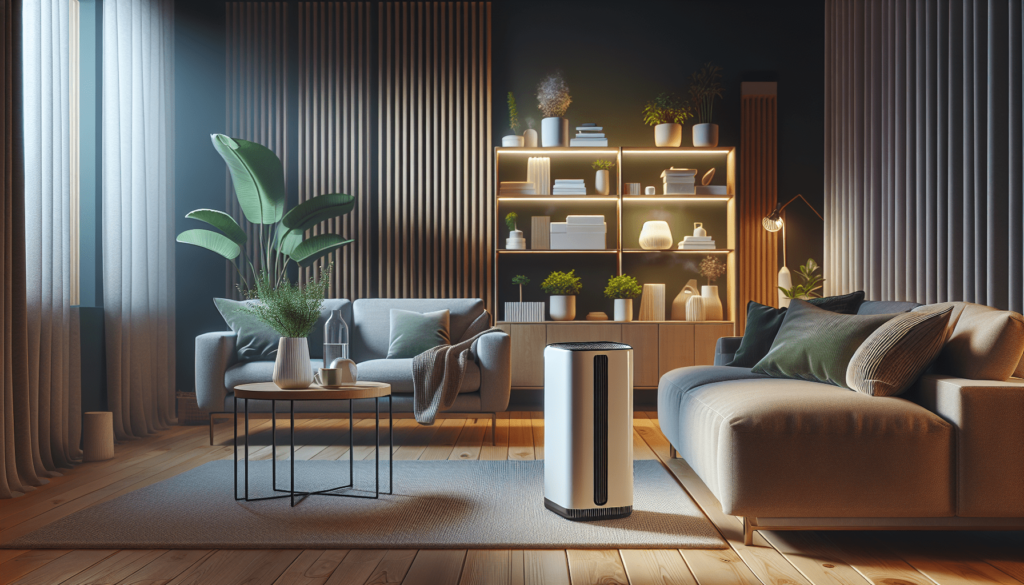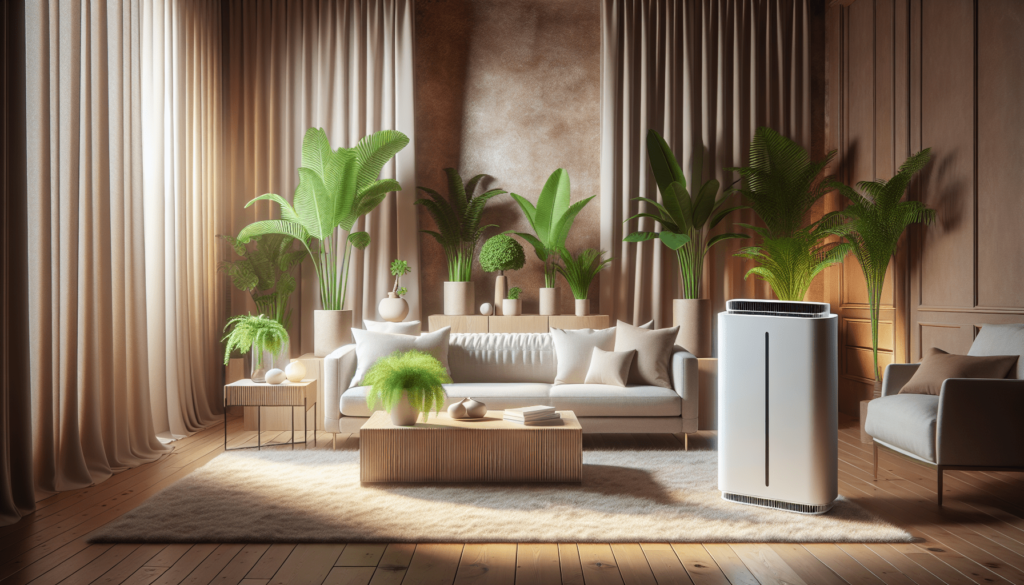In “10 Easy and Effective Ways to Purify the Air in Your Living Room,” you’ll discover straightforward techniques to enhance the air quality in the heart of your home. Breathing clean air is essential for your well-being, and with a few simple changes, you can transform your living space into a healthier, fresher environment. Whether it’s incorporating houseplants, using natural air fresheners, or optimizing ventilation, you’ll find practical tips that are easy to implement and highly effective. Say goodbye to pollutants and hello to a breath of fresh air in your cozy haven! Have you ever thought about the quality of air in your living room? It’s something we often overlook, but maintaining clean air is essential for your health and well-being. Here’s the good news: purifying the air in your living space doesn’t have to be complicated or expensive. You can accomplish it with a few easy and effective steps. Let’s dive right in!
Sure, you could invest in high-tech solutions, but you don’t always need to. Some of the best methods are quite affordable and simple to implement. Below, you’ll find 10 easy and effective ways to purify the air in your living room.

Keep Your Living Room Clean
Regular Dusting and Vacuuming
Dust and dirt can accumulate quickly, especially in high-traffic areas like your living room. Make it a habit to dust surfaces and vacuum the floor regularly. Dust is not just unsightly; it can also harbor allergens and other harmful particles. Use a vacuum with a HEPA filter to capture as many pollutants as possible.
Clean Your Furniture and Upholstery
Your couch, chairs, and cushions can trap dust, dirt, and even pet dander, contributing to poor air quality. Use a fabric cleaner or upholstery attachment on your vacuum to keep these items clean. Regularly washing or changing cushion covers can also make a significant difference.
Open Windows and Doors
Natural Ventilation
One of the simplest ways to purify the air is to allow fresh air to circulate by opening windows and doors. Aim to do this for at least 15 minutes a day. Natural ventilation helps to remove stale air and replenish it with fresh, oxygen-rich air.
Create Cross Ventilation
If possible, open windows and doors on opposite sides of your living room to create a cross-breeze. This method is even more effective at flushing out indoor pollutants, making your living space feel fresher and cleaner.
Use Houseplants
Best Plants for Air Purification
Some indoor plants can do wonders for your air quality. Here’s a list of some plants that are particularly effective:
| Plant Name | Benefits |
|---|---|
| Spider Plant | Removes formaldehyde and xylene |
| Snake Plant | Absorbs toxins like formaldehyde and benzene |
| Peace Lily | Combats ammonia, benzene, formaldehyde |
| Aloe Vera | Removes formaldehyde and benzene |
| Boston Fern | Excellent at removing formaldehyde and xylene |
Caring for Your Plants
Ensure that your plants receive adequate light and water. Healthy plants are more effective at purifying the air. Follow the care instructions specific to each plant to keep them thriving.
Use Air Purifiers
Choosing the Right Air Purifier
Not all air purifiers are created equal. Look for a model with a HEPA filter, as this can capture a wide range of airborne particles, including dust, pollen, and pet dander. Some air purifiers also have carbon filters that can remove odors and gaseous pollutants.
Placement Matters
Place your air purifier in a location where it can circulate air effectively. Avoid placing it in a corner or behind furniture, as this can impede airflow and limit its efficiency.

Avoid Synthetic Fragrances
Opt for Natural Alternatives
Synthetic air fresheners and scented candles can release volatile organic compounds (VOCs) into the air. These chemicals can irritate your respiratory system. Instead, opt for natural alternatives like essential oils or soy-based candles.
DIY Room Sprays
You can also create your own natural room spray using water and a few drops of your favorite essential oil. Simply mix them in a spray bottle and spritz around your living room whenever you need a fragrance boost.
Control Humidity Levels
Use a Dehumidifier
High humidity levels can promote mold and mildew growth, which can affect your air quality. Use a dehumidifier to keep your humidity levels between 30-50%. This will help to minimize allergen and mold presence in your living space.
Proper Ventilation
Use exhaust fans or open windows in areas prone to moisture, like your kitchen and bathroom, to reduce humidity levels. Ensuring your home is properly ventilated can go a long way in improving your indoor air quality.
Avoid Smoking Indoors
Understand the Risks
Secondhand smoke contains harmful chemicals that can linger in your home and affect indoor air quality. If you or anyone in your household smokes, it’s crucial to do so outside.
Create a Smoking Area
If outdoor smoking is not an option, designate a specific area in your home that’s well-ventilated and away from the main living areas. Use an exhaust fan or open windows to help keep the smoke from spreading.
Use Beeswax Candles
Benefits of Beeswax
Unlike traditional paraffin candles, beeswax candles burn cleanly and can help reduce airborne contaminants. They also release negative ions, which can help to neutralize pollutants in the air.
How to Use
Simply light a beeswax candle and let it burn for a few hours each day. Ensure you place it in a safe location away from flammable materials.
Monitor Indoor Air Quality
Use an Air Quality Monitor
Investing in an air quality monitor can give you real-time data on the air quality in your living room. These devices can detect various pollutants, including particulate matter and VOCs, allowing you to take immediate action if needed.
Regular Checks
Check your air quality monitor regularly and take note of any changes. Promptly address any spikes in pollutants by following the steps outlined in this guide.
Implement a No-Shoe Policy
Reduce Contaminants
Shoes can track in dirt, chemicals, and other pollutants from outside. Implementing a no-shoe policy in your home can significantly reduce the amount of contaminants introduced into your living space.
Provide Alternatives
Make it convenient for everyone by providing a shoe rack at the entrance and offering indoor slippers for guests. This small change can make a noticeable difference in maintaining a cleaner living environment.
Conclusion
Purifying the air in your living room doesn’t have to be a daunting task. By incorporating these easy and effective methods, you can create a healthier, cleaner living space for you and your loved ones. Regular cleaning, proper ventilation, and a few strategic investments can go a long way in improving air quality. Try implementing one or two of these tips today and breathe easier knowing you’re taking steps to protect your health and well-being.
Remember, the journey to better air quality is ongoing. Keep up with these habits, and you’ll notice an improvement in no time. Happy breathing!
